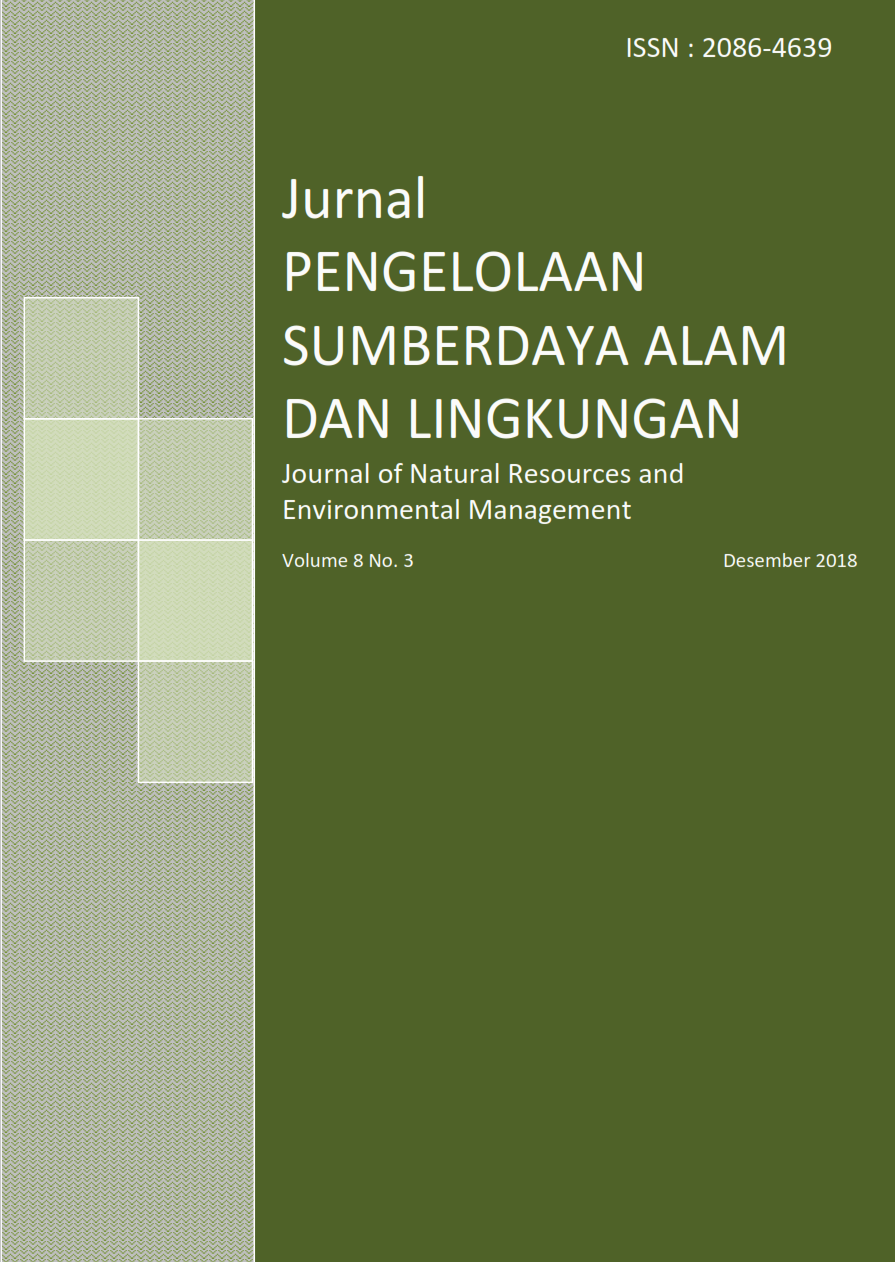PERSEPSI WISATAWAN DALAM PENGEMBANGAN WISATA PENDIDIKAN BERBASIS KONSERVASI GAJAH SUMATERA (Elephas maximus sumatranus) (Perception Of Tourist Development Based Tourism Conservation Education Of Sumatran Elephant (Elephas maximus sumatra
Abstract
The perception of tourists is one of the most important aspects in the development of a tourist area, especially tourism that emphasizes the aspects of education and conservation. This study aims to find information on the perception of tourists in the development of conservation-based education tourism. The method used is survey method and the sample in this research is the tourists and related stakeholder in development. Determination of the number of samples in the population using Slovin formula, so the result at least 100 tourists. Data analysis is descriptively quantitative. The location of the study was conducted at the Elephant Conservation Center (PKG) Way Kambas National Park (TNWK). The results of interviews to 200 respondents known as 98% of respondents who come to PKG aims to travel elephants, 1% doing research and 1% work visit activities and other activities. Perceptions of elephant attractions are classified as Good (44%), 18% is not good. Besides, there were also perception study on service at Elephant Conservation Center (PKG), 53% stated good service, 53% stated facilities good enough, 55% said tourism tourism in PKG quite good, while 57% accessibility to tourism object is not good, and 90% agreed if in the PKG developed into educational tours bebasis konsevasi.Hasil this study is expected to be a reference for managers in developing PKG TNWK become one of the elephant conservation tourism destination in Lampung Province.
References
Abdulhaji, S. dan Yusuf, I.S.H., 2016. Pengaruh Atraksi, Aksesibilitas, Dan Fasilitas Terhadap Citra Objek Wisata Danau Tolire Besar Di Kota Ternate. Jurnal Penelitian Humano7 (2) Edisi November 2016.
Arikunto, S., 2003. Prosedur Penelitian suatu Pendekatan Prakek. Rineka Cipta, Jakarta.
Butler, Richard., Hall, C Michael., 2006, The Influence of fashion and accessibility on destination consumtion, Tourism Business Frortiers, consumer product dang industry, Elsevier, Edited by Dimitrios Buchales and Carlos Costa, page 95- 100.
Çakici, A Celil., Harman, Serhat., 2007, Importance Of Destination Attributes Affecting Destination Choice Of Turkish Birdwatchers, Journal of Commerce & Tourism Education Faculty, Year: 2007 No: 1, Ticaret ve Turizm Egitim Fakültesi Dergisi Yıl: 2007 Sayı: 1, page 131-145.
Fandeli, C. dan M. Nurdin., 2005. Pengembangan Ekowisata Berbasis Konservasi di Taman Nasional. Fakultas Kehutanan Universitas Gadjah Mada, Pusat Studi Pariwisata UGM dan Kantor Kementerian Lingkungan Hidup, Yogyakarta.
Kotler, Philip, 2005. Manajemen pemasaran, jilid 1 dan 2. : PT. Indeks Kelompok Gramedia, Jakarta.
Lukman, H. 2004. Dasar-Dasar Ekowisata. Bayumedia. Malang.
Masyono, S.A., Suhada, 2015. Strategi Pengembangan Sektor Kepariwisataan Di Kabupaten Lampung Timur. Jurnal Derivatif 9 (1), pp. 129—139.
Mulayadin. 2014. Pengembangan Atraksi Wisata Pantai Cipatujah Sebagai Kawasan Wisata Bahari Di Kabupaten Tasikmalaya. Skripsi. UPI. Jakarta.
Murti, H.S., Sujali, 2012. Persepsi Wisatawan terhadap Pengembangan Objek Wisata Batang Dolphin Center. Jurnal 1 (1),pp. 260—267.
Situmorang, S.A., 2016. Estimasi Nilai Ekonomi Dan Strategi Pengelolaan Ekowisata Berbasis Masyarakat Di Taman Nasional Way Kambas (Studi Kasus SPTN Wilayah I Way Kanan dan SPTN Wilayah III Kuala Penet). IPB Press, Bogor.
Soekadijo, R.G., 2003. Anatomi Pariwisata. Penerbit Gramedia Pustaka Utama, Jakarta.
Sugiyono, 2008. Metode Penelitian Bisnis. Alfabeta, Bandung.
Suwantoro, Gamal., 2004. Dasar-dasar Pariwisata. Andi Offset, Yogyakarta.
Ubaidilah. 2010. Teknik Analisis Kuantitatif. Diakses_https://mabadik.wordpress.com/2010/07/10/teknik-analisis-data-kuantitatif/
Umar, H., 2007. Riset Pemasaran dan Perilaku Konsumen. PT. Gramedia, Jakarta.
Authors
Authors who publish with this journal agree to the following terms:
- Authors retain copyright and grant the journal right of first publication with the work simultaneously licensed under a Creative Commons Attribution License that allows others to share the work with an acknowledgement of the work's authorship and initial publication in this journal.
- Authors are able to enter into separate, additional contractual arrangements for the non-exclusive distribution of the journal's published version of the work (e.g., post it to an institutional repository or publish it in a book), with an acknowledgement of its initial publication in this journal.
- Authors are permitted and encouraged to post their work online (e.g., in institutional repositories or on their website) prior to and during the submission process, as it can lead to productive exchanges, as well as earlier and greater citation of published work (See The Effect of Open Access).






